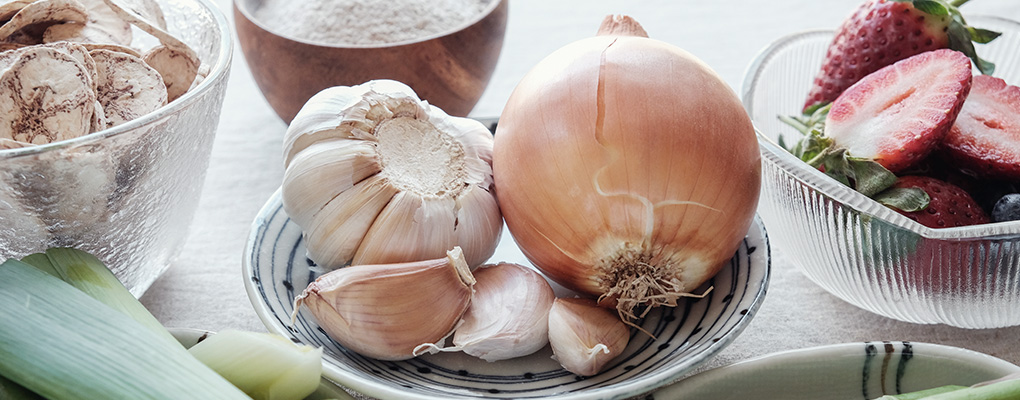
These days you hear a lot about microbiomes. But do you know what a microbiome is and what it does? And most importantly, do know you how to keep yours healthy?
It's a fascinating topic that's giving rise to exciting research with many health implications. We're also going to look at prebiotics, probiotics and how to incorporate them into a healthy diet.
So grab your probiotic yoghurt drink and let’s go!
The microbiome is a collective noun for the mass of different microorganisms colonising your gut. Some of them can be harmful, some are only harmful when their population becomes too large and others are regarded as healthy. These healthy bugs perform useful functions for our bodies. They can limit the growth of bad bacteria, help us digest our food properly, and have a positive influence on our immune systems and much more.
The population of our gut bacteria changes all the time. It turns out it’s very sensitive to what you eat and it’s also affected by the medicines we take, especially antibiotics.
Prebiotics
You’ve probably heard of the term prebiotics. These are non-digestible components of food that stimulate the growth of the ‘friendly’ bacteria in the large bowel. The best studied is inulin (fructo-oligo-fructose or FOS).
Inulin is a type of carbohydrate that we can’t metabolise. It’s found in chicory root and in lesser amounts in Jerusalem artichokes, onion, leeks, garlic, rye and banana. It acts as ‘food’ for the ‘friendly’ bacteria that happily reside in our large intestine and it activates their growth. They love it. It’s often added to foods as a soluble fibre (think yoghurts, liquid breakfasts etc).
It is also added to foods to provide a food source for the probiotic bacteria during storage and is usually just listed as ‘fibre’ on the Ingredient List. Natural prebiotics are found in almost all high-fibre foods but especially in onions, garlic, legumes, asparagus and whole grains, particularly rye.
Another prebiotic is resistant starch and I wrote a post on this on the Foodwatch website which you can read here.
Among the benefits of resistant starch is the fact that it provides a food for the good gut bacteria, the by-products of which are protective of the cells in your gut and can help prevent against colon cancer. The CSIRO has an informative video animation on this called The Hungry Microbiome – well worth a look.
Research from Spain published in Clinical Nutrition studied the effects of inulin and resistant starch in rats. The research indicates that there may be synergistic effects that produce better results than either one shows in isolation.
Probiotics
Definitely a nutrition buzz word at the moment. These are products that contain beneficial bacteria. You can buy them as yoghurts, yoghurt drinks, capsules, and in traditionally fermented foods such as Kefir, Sauerkraut, Kimchee and Kombucha. (Note: commercial products that have been sterilised contain no live probiotic bacteria.)
A recent episode of Michael Mosley’s Trust Me I’m a Doctor, shown on SBS, investigated whether or not these bacteria actually survive the acid in the gut and make it to the large intestine and colon. Stool samples taken before and after the test indicated that they do and the people’s gut flora changed after ingesting both probiotics and prebiotics (which encouraged the growth of the good bacteria.)
What can I eat to keep my microbiome healthy?
As you’d expect, a normal healthy diet that takes treats (alcohol, chocolate, fatty foods) in moderation and focuses mainly on fresh fruit, vegetables, and whole grains (all high in fibre) with fish, meat and dairy and the addition of some fermented foods such as kefir and kombucha should keep your microbiome ticking along nicely. Your microbiome is super sensitive to the foods you eat as this research shows.
The abstract states that:
"Switching from a low-fat, plant polysaccharide-rich diet to a high-fat/high-sugar “Western” diet shifted the structure of the microbiota within a single day, changed the representation of metabolic pathways in the microbiome, and altered microbiome gene expression.”
What are the health benefits of a diet rich in pre- and probiotics?
My take home message
Take care of your gut flora and they will take care of you.
Written by guest contributor, dietitian-nutritionist Catherine Saxelby, and reproduced here with permission from www.foodwatch.com.au.
Tap to call us at 1800 567 348
Fill in your details below and our team will be in contact shortly to answer your questions and get you started.
"*" indicates required fields